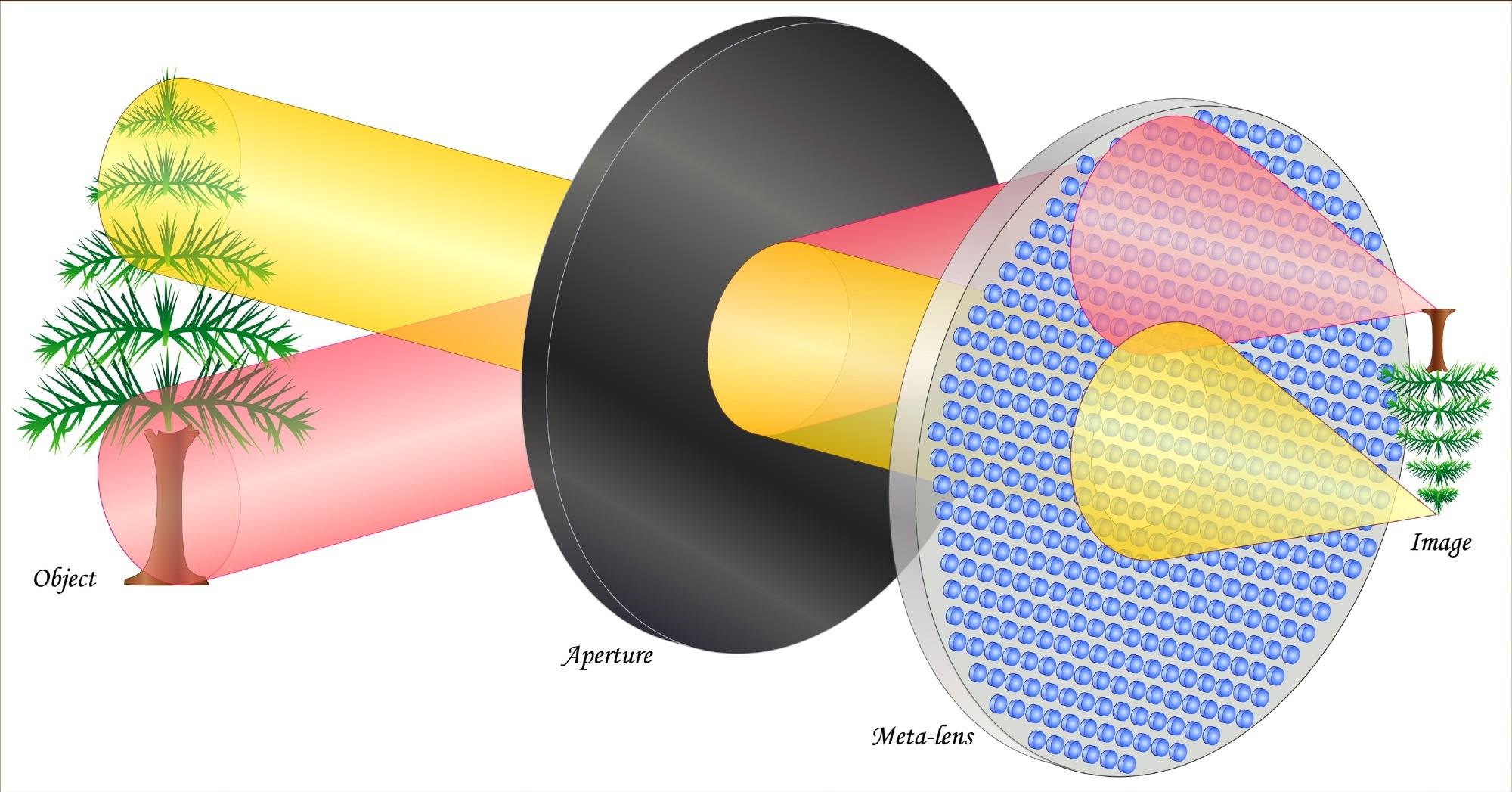A recent study in Optical Materials investigates the beaming effect of a plasmonic metalens with elliptical nanohole arrays in a metal film using experimental techniques and geometric simulations. The rotation of the elliptical main axis impacts the magnitude and polarization state of the light transmitted due to the elliptical nanohole's birefringent effect. The polarization state of metalens influences the resultant diffraction pattern.

Study: Beaming effect of the plasmonic metalens structured with concentric elliptical nanohole arrays. Image Credit: Fouad A. Saad/Shutterstock.com
The beaming effect of plasmonic metalens is influenced by ohmic loss. In this study, the researchers analyzed the beaming effect under the influence of ohmic loss using linearly transmitted light in the visible and near-ultraviolet regimes.
Potential of Plasmonic Metalens in Light Transmission
The plasmonic metasurfaces provide transmitted light with distinctive phase, amplitude, and polarization states. A metalens is a metasurface that alters the optical characteristics of transmitted light. Change in the periodicity of a nanostructure produces the beaming effect when light passes through a nanoslit enclosed in a nanostructure.
Turning the nanoaperture as the light impacts it helps control the polarization of the transmitted light. The plasmonic metalens comprehends the beaming effect of transmitted light. Nanoapertures and nanopillars modify the polarization of light traveling from nanostructures.
The plasmonic metalens produces an artificial phase to maximize the spatial interference of transmitted light. This planar lens effectively increases the focal spot's size and focus depth compared to a conventional lens.
A planar metalens with exceptional optical properties can be created through the correct spatial arrangement of nanoapertures, such as optical vortices and non-diffractive beams.
Ohmic Loss of Metal Films and Beaming Effect of Plasmonic Metalens
Photonics applications range from visible to near-ultraviolet (NUV) regimes. The visible and NUV domains are used for lithography and optical manipulation.
An optical beam with a sharply concentrated spot and an advantageous working distance is necessary for optical applications. Rotational notches in metal films have been investigated for their optical characteristics based on their geometrical design.
No research has examined the ohmic loss of metal films to explore the beaming impact of plasmonic metals using both simulation and experiment.
Metal films display various ohmic losses when the light of different wavelengths is shined. The optical characteristics of plasmonic metalens vary significantly between the NUV and visible wavelengths. The wavelength and thickness of the incident light impact a metal's ohmic loss.
Investigation of Optical Properties of Plasmonic Metalens with Elliptical Nanohole Arrays
Chang et al. examined the optical characteristics of plasmonic metalens in the visible and NUV regions. The plasmonic metalens produced an optical beam with a pinpoint spot.
The researchers suggested a new plasmonic metalens composed of two concentric elliptical nanohole arrays. All elliptical nanoholes in the concentric arrays had the same size and number of nanoholes in the outer and inner concentric arrays.
The researchers investigated the beaming impact of the metalens' transmitted light by varying the thickness and rotation of the elliptical nanoholes. The rotation of the elliptical main axis and thickness of the metal film was used to explain the polarization state of the transmitted light.
Research Findings
This study used computational and experimental techniques to investigate the beaming effect of metalens with diverse wavelengths and geometric shapes.
Metalens consisting of two elliptical nanohole-filled concentric arrays offered flexible polarization enabling the creation of various beam forms. The geometric shape of the metalens controlled the polarization state of the light transmitted from it.
The researchers produced two orthogonal polarizations using the IOPE design. The metalens' convergent optical transmission was made possible by these two orthogonal polarizations. In this study, the researchers also presented an approach for regulating the wavelength of metalens from the standpoint of ohmic loss.
The light in the metallic nanohole behaved as an FP effect for incident light in the visible spectrum. This indicated that the FP resonance had the highest transmission intensity. Light in the metallic nanohole had a high optical absorption for incident light in the NUV range and lacked a noticeable FP resonance. However, some particular uses (such as lithography and phototherapy) necessitate light with high transmission intensity in the NUV range. The silver thickness was increased to manage the transmitted polarization by arranging geometric shapes for specific purposes.
Possibility of Employing Suggested Metalens in Optical Applications
The overall optical transmission of metalens was around 17% for the IOPE. The IOPE's focusing region had an optical transmission of just 2%. Increasing the number of elliptical nanoholes improved optical transmission. The nanoapertures in the metal film had decreased focusing efficiency because the metal film was opaque. However, the nanoapertures of metalens had wavelength-selective capabilities and a greater signal-to-noise ratio. This made it possible to employ these metalenses in applications using maskless lithography.
Reference
Chang, C.-K., & Yeh, W.-T. (2022) Beaming effect of the plasmonic metalens structured with concentric elliptical nanohole arrays. Optical Materials, 134, 113084. https://www.sciencedirect.com/science/article/pii/S0925346722011211
Disclaimer: The views expressed here are those of the author expressed in their private capacity and do not necessarily represent the views of AZoM.com Limited T/A AZoNetwork the owner and operator of this website. This disclaimer forms part of the Terms and conditions of use of this website.